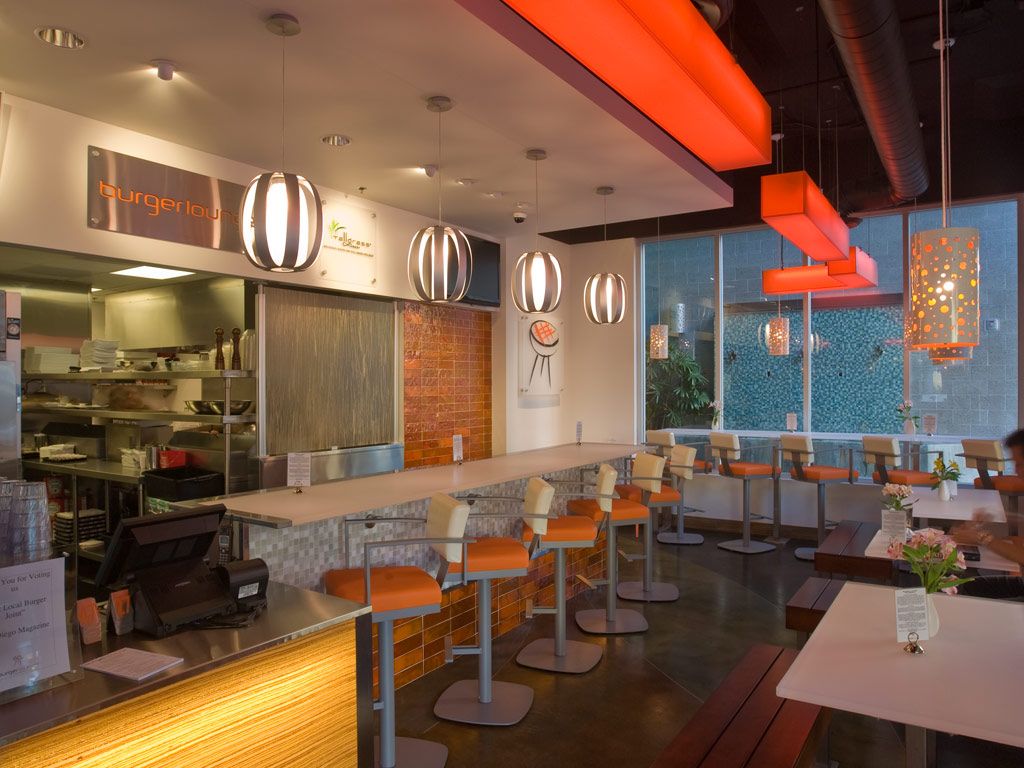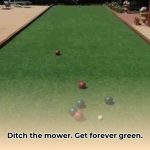The face of fast food is changing. Gone are the days of bland, cookie-cutter restaurants. Today, QSRs (Quick Service Restaurants) are embracing innovative interior design to create memorable dining experiences that keep customers coming back for more.
From maximizing limited space to incorporating cutting-edge technology and embracing sustainability, this guide explores the hottest trends shaping the future of fast food interior design.
Quick Service Restaurant Interior Design: Creating a Space That Sizzles
Designing a successful QSR goes beyond a delicious menu. The interior design plays a crucial role in attracting customers, shaping their perception of the brand, and enhancing their overall dining experience.
Here are key considerations to transform your QSR space:
Space: Making the Most of Every Square Foot
- Strategic Furniture Selection: Opt for space-saving tables and chairs that fit comfortably without overwhelming the space. Consider sleek, minimalist designs that maximize seating capacity.
- Smart Storage Solutions: Utilize vertical space and hidden storage to keep the dining area organized and clutter-free, ensuring smooth customer flow.
- Optimize Traffic Flow: Create clear pathways for customers to navigate the space effortlessly, minimizing bottlenecks and enhancing efficiency.
Brand Infusion: Let Your Personality Shine!
- Visual Identity: Infuse your brand’s personality through every design element, from the color palette and materials to the décor and signage.
- Consistent Messaging: Ensure that the interior design aligns with your brand’s values, message, and target audience.
- Memorable Elements: Incorporate unique design features, such as a custom mural, eye-catching lighting, or branded signage, to create a lasting impression.
Local Love: Embrace Your Community
- Source Locally: Whenever possible, incorporate local materials, artwork, and design elements to connect with the community and foster a sense of belonging.
- Celebrate Culture: Pay homage to local landmarks or cultural references in your décor to create a sense of place and resonate with the community.
- Support Local Artists: Feature artwork from local artists to add a unique touch and support the creative community.
Comfort is King (or Queen!):
- Comfortable Seating: Provide a mix of seating options to accommodate different dining preferences, such as booths for intimate gatherings, tables for larger groups, and bar seating for solo diners.
- Inviting Lighting: Use a combination of ambient, task, and accent lighting to create a warm, welcoming atmosphere that enhances the dining experience.
- Accessibility for All: Ensure your space is accessible for individuals with disabilities, providing ramps, accessible restrooms, and seating options that accommodate various needs.
Trendy Tech and Sustainable Style:
- Integrate Technology: Enhance the customer experience and streamline operations by incorporating self-order kiosks, mobile ordering systems, and digital menu boards.
- Embrace Sustainability: Demonstrate your commitment to the environment by using eco-friendly materials, energy-efficient lighting, and sustainable practices throughout your design.
- Stay Ahead of the Curve: Keep abreast of emerging technologies and design trends to ensure your QSR remains modern and relevant.
| Element | Description |
|---|---|
| Seating | Mix of booths, tables, and counters for flexibility |
| Lighting | Bright and inviting, with task lighting for ordering areas |
| Color Palette | Reflect brand identity and create a welcoming atmosphere |
| Materials | Durable, easy to clean, and visually appealing |
| Acoustics | Manage noise levels for a comfortable dining experience |
| Signage | Clear and concise, guiding customers through the space |
| Technology | Integrate self-order kiosks or digital menu boards |
| Sustainability | Use recycled materials and energy-efficient solutions |
How to Design a Quick Service Restaurant Interior for Maximum Efficiency
Efficiency is paramount in the fast-paced world of QSRs. A well-designed interior should optimize space, streamline operations, and enhance the customer experience.
Here’s how to design for maximum efficiency:
Think Smart, Use Every Nook and Cranny!
- Maximize Vertical Space: Utilize mezzanine levels, lofted seating, or strategically placed shelves to add functionality without sacrificing valuable floor space.
- Embrace Multi-Functionality: Choose furniture with built-in storage or incorporate design elements that serve dual purposes, such as a counter that functions as both a serving station and a divider.
Create a Vibe That Says, “Come on In!”
- Warm and Welcoming Colors: Use a color palette that stimulates appetite and creates a positive atmosphere, such as warm yellows, inviting oranges, or vibrant reds.
- Strategic Use of Lighting: Maximize natural light to brighten the space and create a sense of openness. Use a variety of lighting techniques to create different moods and highlight key areas.
- Incorporate Greenery: Add plants or vertical gardens to bring a touch of nature indoors, improve air quality, and create a more relaxing ambiance.
Roll with the Changes, Baby!
- Flexible Floor Plans: Design a layout that can be easily reconfigured to accommodate different customer volumes, special events, or changing needs.
- Modular Furniture: Utilize furniture that can be easily moved, rearranged, or combined to create different seating configurations.
- Adaptable Technology: Invest in technology that can adapt to changing customer demands, such as mobile ordering systems, self-service kiosks, and digital menu boards that can be updated instantly.
Let Your Restaurant’s Personality Shine!
- Custom Artwork & Signage: Commission custom murals, artwork, or signage that reflects your brand’s story, values, or menu offerings.
- Unique Seating Arrangements: Consider unconventional seating options, such as swings, communal tables, or cozy nooks, to create a memorable and Instagram-worthy dining experience.
Tech Up and Go Green!
- Seamless Tech Integration: Implement technology to improve efficiency and enhance the customer experience, such as digital kiosks for ordering, mobile ordering systems, and kitchen display systems.
- Sustainable Practices: Make eco-conscious choices by using sustainable building materials, energy-efficient appliances, and implementing practices that reduce waste and conserve resources.
Creating a Brand Identity Through Quick Service Restaurant Interior Design
Your QSR’s interior design is a powerful tool for building brand identity and creating a memorable customer experience.
Here’s how to leverage design to elevate your brand:
Understanding Your Target Audience
- Demographics: Consider the age, income, lifestyle, and preferences of your target customers.
- Dining Habits: Analyze their dining habits, such as whether they typically dine in, take out, or use drive-thru services.
- Brand Perception: Understand how your target audience perceives your brand and what message you want to convey through your interior design.
Translating Brand Values into Design
- Color Palette: Choose colors that evoke specific emotions and align with your brand’s personality. For example, bright and bold colors for a fun, energetic brand, or earthy tones for a natural, health-focused concept.
- Materials & Textures: Select materials and textures that reinforce your brand’s message. For instance, rustic wood and exposed brick for a handcrafted, artisanal feel or sleek metal and glass for a modern, minimalist aesthetic.
- Lighting Design: Lighting plays a crucial role in setting the mood and ambiance. Use warm, inviting lighting for a cozy and intimate setting, or bright, energetic lighting for a lively and social atmosphere.
Functionality & Aesthetics in Harmony
- Efficient Flow: Design a layout that ensures a smooth flow of customers and staff, optimizing efficiency and minimizing wait times.
- Comfortable Seating: Provide seating options that are both comfortable and aesthetically aligned with your brand’s style.
- Practical & Durable Materials: Choose materials that are durable, easy to clean, and can withstand the wear and tear of a high-traffic environment.
Key Design Elements & Their Impact
| Element | Impact |
|---|---|
| Lighting | Sets the mood – think bright and energetic or warm and cozy |
| Seating Arrangement | Encourages lingering or quick bites |
| Materials | Reinforces the brand message – like rustic wood for a farm-to-table concept |
| Color Palette | Evokes specific emotions and associations |
The Impact of Drive-Thru Design on Quick Service Restaurant Success
The drive-thru is a critical revenue stream for many QSRs, and its design can significantly impact customer satisfaction, efficiency, and ultimately, profitability.
Here’s how to optimize your drive-thru for maximum impact:
1. Speed is King, but Don’t Skimp on Smoothness
- Optimize Lane Configuration: Implement dual lanes or dedicated lanes for mobile order pickups to expedite service and minimize wait times.
- Clear and Concise Signage: Use large, easy-to-read signage to guide customers through the ordering process, minimize confusion, and prevent bottlenecks.
- Strategic Menu Placement: Position digital menu boards strategically to ensure optimal visibility and minimize customer wait times.
2. The Digital Age Met Its Match: The Drive-Thru
- Mobile Ordering & Payment: Integrate mobile ordering and payment systems to allow customers to order and pay ahead of time, reducing wait times and enhancing convenience.
- Loyalty Programs & Personalization: Implement loyalty programs and utilize data to personalize the drive-thru experience, offering customized recommendations and exclusive deals.
- AI-Powered Chatbots: Consider incorporating AI-powered chatbots into the ordering process to assist with order taking, answer questions, and provide efficient customer service.
3. Keeping Up with the Times (and Tastes)
- Menu Innovation: Offer a variety of menu options, including healthy choices, vegetarian/vegan options, and limited-time offers to cater to evolving customer preferences.
- Enhanced Comfort: Consider adding shaded waiting areas, outdoor seating, or in-car dining options to enhance comfort and cater to different dining preferences.
- Drive-Thru Exclusives: Offer unique menu items or promotions exclusively available through the drive-thru to incentivize usage and differentiate the experience.
4. Drive-Thru Makeover: Brand Edition
- Consistent Branding: Ensure your drive-thru design aligns with your overall brand identity, using consistent colors, signage, and architectural elements.
- Memorable Experiences: Create a positive and memorable drive-thru experience through friendly service, efficient operations, and small touches that enhance customer satisfaction.
- Ongoing Improvements: Continuously seek ways to improve your drive-thru design and operations based on customer feedback, industry trends, and emerging technologies.
Key Takeaways for QSR Success
- Maximize Space: Utilize every square foot efficiently to maximize seating capacity, optimize operations, and create a comfortable dining environment.
- Embrace Technology: Incorporate technology to enhance the customer experience, streamline operations, and stay ahead of the competition.
- Prioritize Sustainability: Demonstrate your commitment to the environment through sustainable design choices and operational practices.
- Focus on the Customer: Design every aspect of your QSR with the customer in mind, creating a welcoming, efficient, and memorable dining experience.
By embracing these trends and focusing on innovation, QSRs can create dynamic and engaging spaces that drive customer loyalty and fuel business growth.
- Grass Forever in Livermore: Your Guide to Artificial Turf - April 22, 2025
- German Roaches vs. American Roaches: Key Differences and Control - April 22, 2025
- 150+ Flowers That Start With S: A Comprehensive Guide - April 22, 2025










